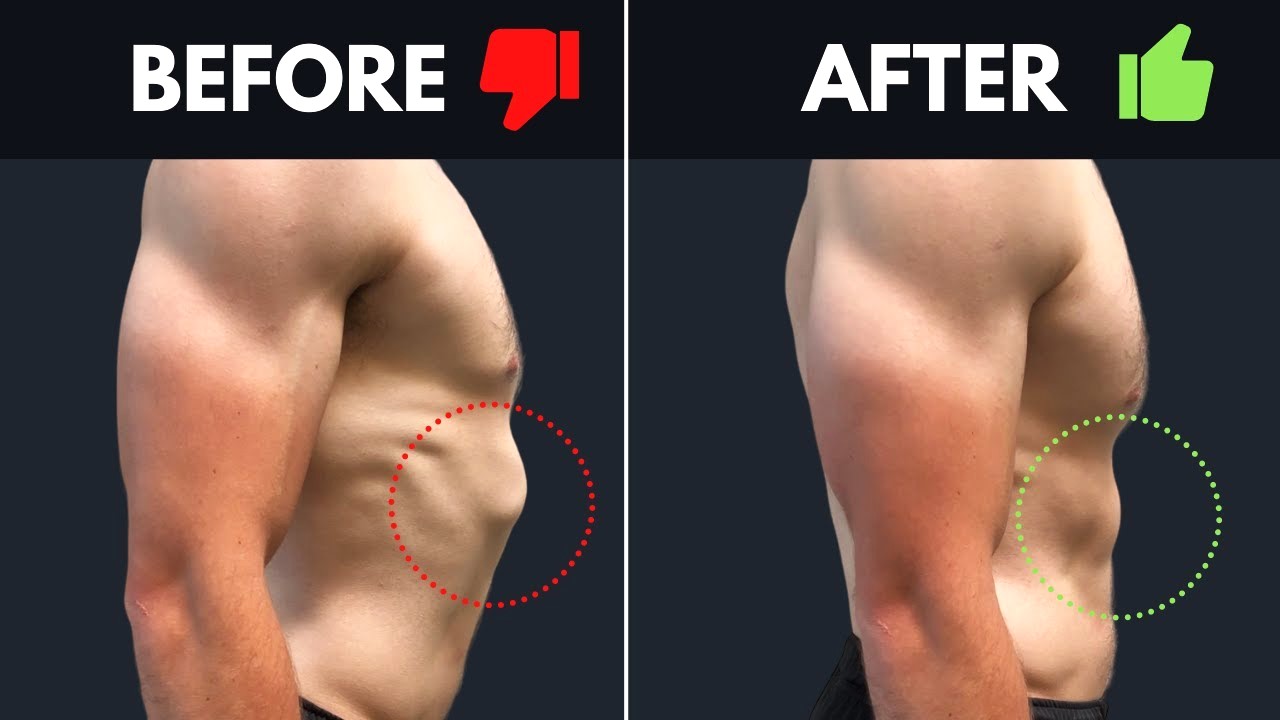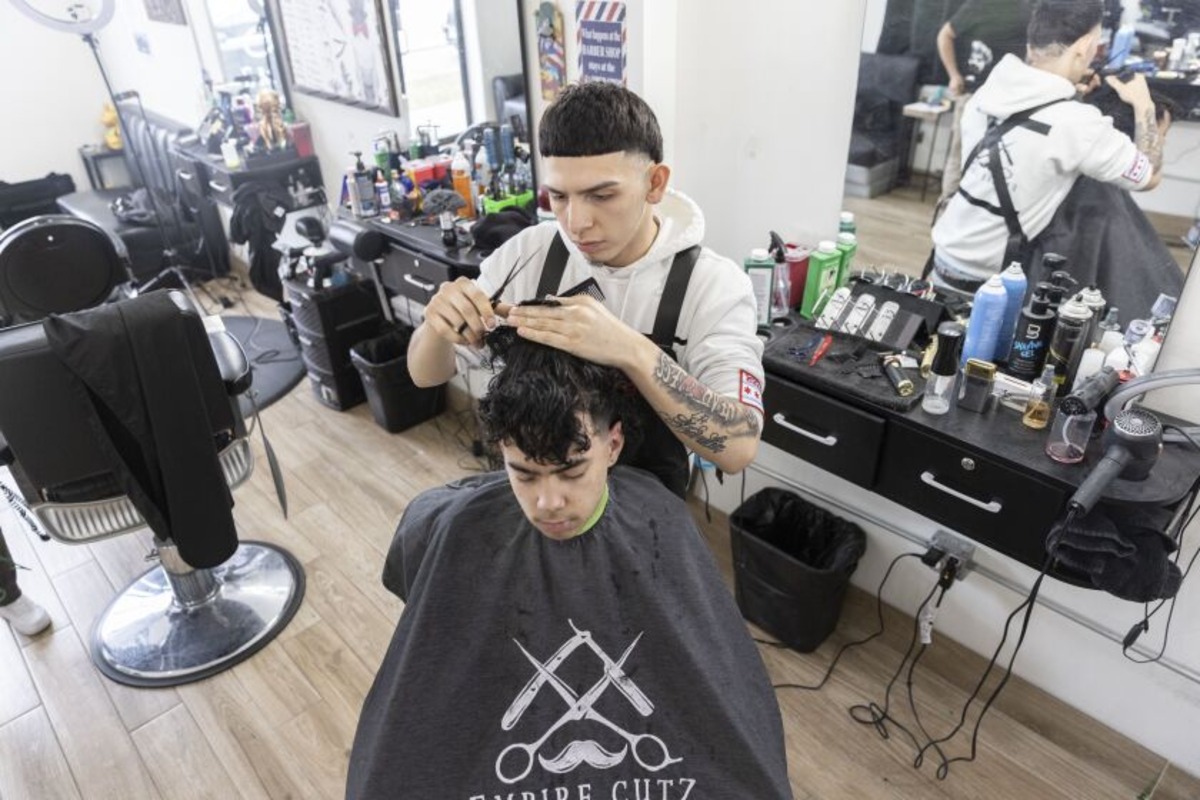Home>Health and Wellness>How To Treat And Prevent Flared Ribs


Health and Wellness
How To Treat And Prevent Flared Ribs
Published: March 3, 2024
Learn effective methods for treating and preventing flared ribs to improve your health and wellness. Discover expert tips and techniques to alleviate discomfort and promote healing.
(Many of the links in this article redirect to a specific reviewed product. Your purchase of these products through affiliate links helps to generate commission for Noodls.com, at no extra cost. Learn more)
Table of Contents
Introduction
Flared ribs, also known as flaring of the rib cage, can cause discomfort and affect one's quality of life. This condition occurs when the lower ribs protrude outward, leading to a visible and often uncomfortable bulge in the chest area. While it is not a life-threatening condition, it can cause pain, difficulty breathing, and self-consciousness in those affected.
Understanding the causes, symptoms, and treatment options for flared ribs is essential for managing this condition effectively. By gaining insight into the underlying factors contributing to flared ribs, individuals can take proactive steps to alleviate discomfort and prevent further progression.
In the following sections, we will delve into the intricacies of flared ribs, exploring the potential causes, common symptoms, available treatment options, and preventive measures. By shedding light on this often overlooked condition, we aim to empower individuals with the knowledge needed to address flared ribs and improve their overall well-being.
Read more: How To Fix A Rib Out Of Place
Understanding Flared Ribs
Flared ribs, also referred to as flaring of the rib cage, is a condition characterized by the protrusion of the lower ribs, causing the chest to appear more prominent than usual. This outward flaring can lead to discomfort, aesthetic concerns, and potential complications in severe cases. The rib cage, a vital component of the human skeletal system, serves to protect the internal organs and support respiratory function. When the lower ribs flare outwards, it can impact the structural integrity of the chest cavity, leading to a range of symptoms and challenges.
The rib cage is comprised of 12 pairs of ribs, which are connected to the spine at the back and the sternum at the front, forming a protective enclosure for the vital organs. Flared ribs occur when the lower ribs, typically the 7th to 10th ribs, protrude outward beyond their normal alignment. This outward protrusion can be attributed to various factors, including skeletal structure, muscle imbalances, and postural habits.
Individuals with flared ribs may notice a visible bulge in the lower chest area, which can be particularly pronounced when standing or sitting upright. This protrusion can lead to a sunken appearance in the upper chest, creating an imbalance in the overall chest contour. Moreover, flared ribs can contribute to discomfort and pain, especially in the lower chest and upper abdominal region. This discomfort may be exacerbated during physical activities or prolonged periods of standing or sitting.
Understanding the underlying mechanisms of flared ribs involves considering the structural and muscular components of the chest and back. Skeletal factors, such as the shape and orientation of the ribs, can influence the likelihood of flaring. Additionally, muscle imbalances, particularly in the chest, back, and abdominal muscles, can contribute to the outward protrusion of the lower ribs. Poor posture, including slouching or overarching the lower back, can also exacerbate flared ribs by placing uneven pressure on the rib cage.
In essence, understanding flared ribs entails recognizing the anatomical, muscular, and postural elements that contribute to this condition. By gaining insight into these factors, individuals can take proactive measures to address flared ribs effectively, thereby alleviating discomfort and promoting a more balanced and harmonious chest structure.
Causes of Flared Ribs
Flared ribs can stem from a variety of factors, encompassing skeletal structure, muscle imbalances, and postural habits. Understanding these underlying causes is crucial in addressing and managing this condition effectively.
Skeletal Structure:
The shape and orientation of the ribs play a pivotal role in the development of flared ribs. Individuals with a naturally wider rib cage or a more pronounced curvature in the lower ribs may be predisposed to this condition. The inherent skeletal structure can contribute to the outward protrusion of the lower ribs, leading to the characteristic bulge in the chest area.
Muscle Imbalances:
Muscular imbalances in the chest, back, and abdominal regions can also contribute to flared ribs. Weakness or tightness in specific muscle groups can disrupt the natural alignment of the rib cage, leading to outward flaring. For instance, weak abdominal muscles may fail to provide adequate support to the lower ribs, allowing them to protrude outward. Similarly, imbalances in the chest and back muscles can further exacerbate this condition, impacting the overall chest contour.
Poor Posture:
Postural habits, particularly those involving slouching or overarching the lower back, can exert uneven pressure on the rib cage, contributing to the development of flared ribs. Prolonged periods of slouching or sitting with a rounded back can lead to structural changes in the rib cage, promoting outward flaring of the lower ribs. Additionally, overarching the lower back, a posture commonly associated with swayback, can accentuate the protrusion of the lower ribs, further exacerbating the condition.
Growth Spurts:
During periods of rapid growth, such as adolescence, the body undergoes significant changes, including skeletal development. Growth spurts can impact the alignment and positioning of the ribs, potentially leading to flared ribs. The rapid elongation of the torso and the accompanying adjustments in skeletal structure can contribute to the outward protrusion of the lower ribs, manifesting as flared ribs.
Injury or Trauma:
In some cases, injury or trauma to the chest area can result in flared ribs. Blunt force trauma or fractures affecting the lower ribs can disrupt their normal alignment, leading to outward flaring. Additionally, injuries to the surrounding muscles and connective tissues can contribute to muscle imbalances, further exacerbating the condition.
By recognizing these underlying causes of flared ribs, individuals can take proactive steps to address and manage this condition effectively. Targeted interventions, including corrective exercises, postural adjustments, and lifestyle modifications, can help alleviate discomfort and promote a more balanced chest structure.
Symptoms of Flared Ribs
The symptoms of flared ribs can manifest in various ways, impacting both physical comfort and self-image. Individuals with this condition may experience the following symptoms:
-
Visible Protrusion: The most apparent symptom of flared ribs is the visible protrusion of the lower ribs, creating a bulge in the chest area. This outward flaring can be particularly pronounced when standing or sitting upright, leading to a noticeable imbalance in the chest contour.
-
Discomfort and Pain: Flared ribs can cause discomfort and pain, especially in the lower chest and upper abdominal region. Individuals may experience aching or soreness in the affected area, which can be exacerbated during physical activities or prolonged periods of standing or sitting.
-
Breathing Challenges: In some cases, flared ribs can impact respiratory function, leading to breathing challenges. The outward protrusion of the lower ribs may restrict the natural expansion of the chest during breathing, potentially causing feelings of breathlessness or tightness in the chest.
-
Aesthetic Concerns: Beyond the physical discomfort, individuals with flared ribs may experience aesthetic concerns related to the visible bulge in the chest area. This can lead to self-consciousness and a desire to conceal the protrusion, particularly in social or intimate settings.
-
Postural Imbalance: Flared ribs can contribute to postural imbalance, affecting the overall alignment of the torso. Individuals may notice a sunken appearance in the upper chest, accompanied by an exaggerated curvature in the lower back, further accentuating the outward protrusion of the lower ribs.
-
Muscle Fatigue: The muscle imbalances associated with flared ribs can lead to fatigue and strain in the chest, back, and abdominal muscles. Individuals may experience muscle fatigue more readily, particularly during activities that engage the affected muscle groups.
Recognizing these symptoms is essential for understanding the impact of flared ribs on daily life and overall well-being. By acknowledging these manifestations, individuals can seek appropriate interventions to alleviate discomfort, improve respiratory function, and enhance their confidence and posture.
Understanding the symptoms of flared ribs is a crucial step in addressing this condition effectively. By recognizing the physical and emotional impact of these symptoms, individuals can take proactive measures to manage flared ribs and improve their quality of life.
Treatment Options
Addressing flared ribs involves a multifaceted approach aimed at alleviating discomfort, improving posture, and promoting a more balanced chest structure. While complete reversal of flared ribs may not always be achievable, targeted interventions can effectively manage this condition and enhance overall well-being.
Physical Therapy and Corrective Exercises
Physical therapy plays a pivotal role in addressing flared ribs by targeting muscle imbalances, improving posture, and enhancing chest mobility. Specific exercises, such as chest stretches, thoracic spine mobilization, and core strengthening routines, can help rebalance the musculature surrounding the rib cage. By addressing weaknesses and tightness in the chest, back, and abdominal muscles, physical therapy aims to restore optimal alignment and support for the rib cage.
Postural Correction
Emphasizing postural correction is essential in managing flared ribs. Individuals are encouraged to maintain proper posture throughout daily activities, including sitting, standing, and walking. Engaging in postural exercises and mindfulness techniques can help individuals become more conscious of their body alignment, thereby reducing the strain on the rib cage and promoting a more balanced chest contour.
Orthotic Support
Orthotic interventions, such as custom-fitted braces or supportive garments, can provide external support for individuals with flared ribs. These orthotic devices are designed to promote proper alignment of the rib cage, reduce discomfort, and encourage improved posture. By providing external support, orthotic interventions can complement other treatment modalities, contributing to enhanced comfort and structural alignment.
Lifestyle Modifications
Incorporating lifestyle modifications can positively impact the management of flared ribs. This may include ergonomic adjustments in work or home environments to support optimal posture, as well as the adoption of ergonomic seating and standing practices. Additionally, engaging in low-impact physical activities, such as swimming or yoga, can promote overall body awareness, muscular balance, and chest mobility.
Surgical Intervention (In Severe Cases)
In severe cases where conservative measures do not sufficiently address flared ribs, surgical intervention may be considered. Surgical procedures aimed at correcting the alignment of the rib cage can be explored under the guidance of a qualified healthcare professional. However, surgical options are typically reserved for extreme cases and require careful consideration of potential risks and benefits.
By integrating these treatment options, individuals can effectively manage flared ribs, alleviate discomfort, and promote a more balanced and harmonious chest structure. It is important to consult with healthcare professionals to develop a personalized treatment plan tailored to individual needs and circumstances. Through a comprehensive and proactive approach, individuals can address flared ribs effectively, enhancing their overall well-being and quality of life.
Preventing Flared Ribs
Preventing flared ribs involves proactive measures aimed at promoting optimal skeletal alignment, muscular balance, and postural habits. By addressing potential risk factors and implementing preventive strategies, individuals can reduce the likelihood of developing flared ribs and maintain a more harmonious chest structure.
Emphasizing Proper Posture
Maintaining proper posture is fundamental in preventing flared ribs. Individuals are encouraged to be mindful of their body alignment during various activities, including sitting, standing, and engaging in physical tasks. Emphasizing a neutral spine, avoiding slouching, and supporting the natural curvature of the spine can contribute to a more balanced chest contour and reduce the risk of rib protrusion.
Core Strengthening Exercises
Incorporating core strengthening exercises into regular fitness routines can promote muscular balance and stability in the chest and abdominal regions. Targeted exercises, such as planks, abdominal crunches, and Pilates routines, can enhance the strength and endurance of the core muscles, providing essential support for the rib cage and reducing the likelihood of outward rib flaring.
Ergonomic Work and Seating Practices
Creating ergonomic work and seating environments is crucial in preventing flared ribs. Individuals should prioritize ergonomic seating with adequate lumbar support to maintain optimal spinal alignment. Additionally, incorporating regular breaks to stretch and adjust posture during prolonged periods of sitting can mitigate the risk of developing muscular imbalances and postural issues that contribute to flared ribs.
Mindful Breathing Techniques
Practicing mindful breathing techniques can enhance chest mobility and promote optimal rib cage alignment. Engaging in deep breathing exercises, such as diaphragmatic breathing and rib expansion techniques, can support the natural movement of the rib cage, reducing the likelihood of restrictive patterns that may contribute to flared ribs.
Regular Postural Assessments
Conducting regular postural assessments with the guidance of healthcare professionals can aid in identifying early signs of postural imbalances that may predispose individuals to flared ribs. By addressing postural concerns proactively, individuals can implement targeted interventions to maintain optimal skeletal alignment and muscular balance, reducing the risk of developing flared ribs.
By integrating these preventive strategies into daily routines and lifestyle practices, individuals can take proactive steps to reduce the risk of flared ribs and promote a more balanced and harmonious chest structure. Prioritizing skeletal alignment, muscular balance, and postural awareness can significantly contribute to preventing the development of flared ribs and supporting overall musculoskeletal health.
Conclusion
In conclusion, understanding the complexities of flared ribs is essential for individuals seeking to address this condition effectively. By delving into the causes, symptoms, treatment options, and preventive measures associated with flared ribs, individuals can gain valuable insights into managing this often overlooked aspect of musculoskeletal health.
Flared ribs, characterized by the outward protrusion of the lower ribs, can lead to discomfort, aesthetic concerns, and potential complications. Recognizing the underlying causes, such as skeletal structure, muscle imbalances, and poor posture, provides a foundation for targeted interventions aimed at alleviating discomfort and promoting a more balanced chest structure.
The symptoms of flared ribs, including visible protrusion, discomfort, breathing challenges, and postural imbalance, underscore the multifaceted impact of this condition on physical comfort and self-image. By acknowledging these manifestations, individuals can seek appropriate interventions to improve respiratory function, enhance posture, and alleviate discomfort.
Addressing flared ribs involves a comprehensive approach encompassing physical therapy, corrective exercises, postural correction, orthotic support, lifestyle modifications, and, in severe cases, surgical intervention. By integrating these treatment options, individuals can effectively manage flared ribs, promoting a more balanced and harmonious chest structure.
Preventing flared ribs entails proactive measures focused on promoting optimal skeletal alignment, muscular balance, and postural habits. Emphasizing proper posture, incorporating core strengthening exercises, creating ergonomic work and seating environments, practicing mindful breathing techniques, and conducting regular postural assessments are essential in reducing the likelihood of developing flared ribs.
By recognizing the impact of flared ribs on daily life and overall well-being, individuals can take proactive measures to manage this condition effectively. Prioritizing skeletal alignment, muscular balance, and postural awareness can significantly contribute to preventing the development of flared ribs and supporting overall musculoskeletal health.
In essence, by shedding light on the intricacies of flared ribs, this comprehensive guide aims to empower individuals with the knowledge needed to address this condition effectively, thereby enhancing their quality of life and promoting a more balanced and harmonious chest structure.










